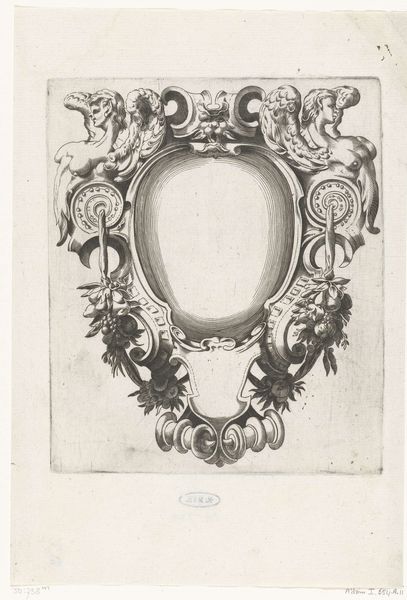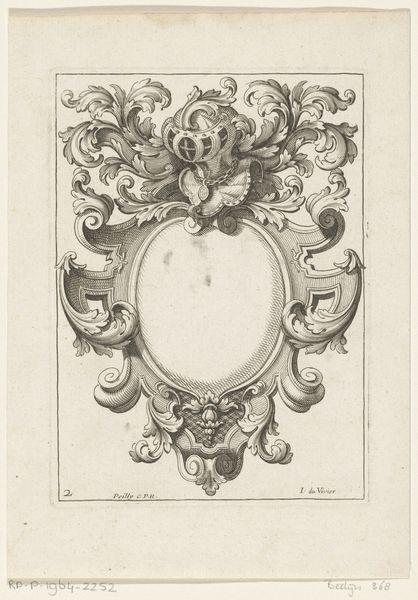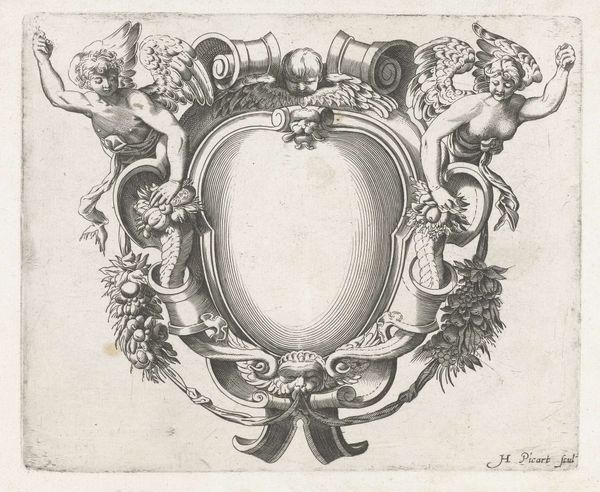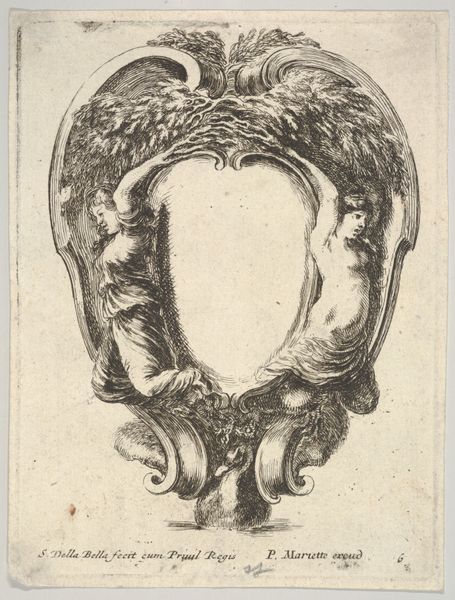
drawing, graphic-art, print, engraving
#
drawing
#
graphic-art
#
baroque
#
pen drawing
# print
#
engraving
Dimensions: height 181 mm, width 148 mm
Copyright: Rijks Museum: Open Domain
Editor: Here we have "Cartouche met leeuwenkop bovenaan" from around 1628, a pen drawing and engraving by H. Picart. I’m struck by the sheer exuberance of its Baroque design, all swirling lines and fantastical creatures. What’s your take? How do you see it? Curator: Indeed, the Baroque sensibility is undeniable. Note the strategic use of contrast, how the engraver's line weight modulates, creating depth and highlighting specific forms. What purpose do you think the empty center serves within the overall composition? Editor: It creates negative space and gives a kind of floating sensation within the picture, but I'm not quite sure to whom would such a cartouche would appeal or for what possible artistic endeavor could this drawing be purposed. Curator: It functions, semantically, as a void waiting to be filled – potential heraldry, perhaps. Structurally, observe how the lion's head at the apex is echoed by the vegetal forms below. There's a clear axial symmetry, yet the flanking figures disrupt a rigid interpretation. Are they human? Are they bestial? Editor: They seem… ambiguous. And they carry so much detailed patterning around themselves with such confidence that seems almost haughty. All those decorations make it incredibly opulent, but at the same time, slightly claustrophobic, in my opinion. Curator: Consider, however, how these dense areas of ornamentation offset the smoother, less-defined contours of the central void, enhancing the play between surface and depth. Ultimately, the composition transcends mere decoration, presenting us with a self-contained system of visual relationships. Editor: It’s fascinating to consider how formal elements alone can convey so much. Thank you. Curator: A pleasure. Observing how an image presents itself to be more important that one might suspect.
Comments
No comments
Be the first to comment and join the conversation on the ultimate creative platform.













